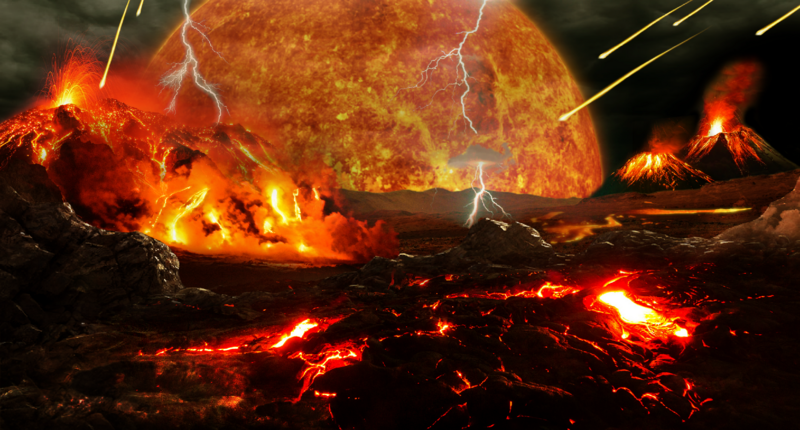Because why not, here are some panoramas I’ve stitched together from some photos I’ve taken recently showing the skies around here…
More after the break.
Because why not, here are some panoramas I’ve stitched together from some photos I’ve taken recently showing the skies around here…
More after the break.
For a long time many people thought that life on Earth was less than 10,000 years old. With discoveries in the 19th century, that got pushed back to tens of millions. Then hundreds of millions. Then a billion or more years. Guess what:
Fossils of 4 centimeter stromatolites (mats of “biofilm,” or cyanobacterial scum) have been found in the Isua supracrustal belt in southwest Greenland dating to 3.7 billion years ago. This is 220 million years older then the previous record holder from Australia. This pushes the estimate of the beginning of single cell life back to more than 4 billion years ago, during the Hadean period. This is backed up by discoveries in late 2015 of traces of carbon in 4.1 billion year old zircon crystals that hint at a biological origin. Given that the Earth formed about 4.6 billion years ago, this is a remarkably short period for life to arise, and in one hell of an environment (Get it? See what I did there? “Hell” of an environment? “Hadean” period? Huh? Bah.)

Life, it seems, arises quickly in terrible places. Fossils may well exist on Mars, and possibly on Venus. Complex multicellular life, however, seems to take a bit more effort. Life on Earth peaked with bacteria for around three and a half billion years. The universe may be filled with planets coated in scum, with only a few advanced up to worms and bugs.
This is a vision of the cosmos made The Old Fashioned Way… analog, not digital. A lot of the visuals don;t seem terribly accurate, but they sure are pretty. And they’d fit in quite well at the end of “2001,” which makes it worth the few minutes right there.
Ooops.
Well, that’s a bummer. Not a real shocker, but nevertheless a bummer.
UPDATED: See more at the end.
Sure, “crazy” and “stupid” are obvious. But I’m thinking more along the lines of “vapid.” There’s something about the woman’s voice here that I find to be *really* grating. Not just the insane worldview on display, but just the voice itself, the speaking style that seems… I dunno. Like, omigawd, old-school Valley Girl but with a dash of stoner thrown in, so that her *voice* sound… what? Lazy? How to describe it?
Take a look at the video after the break and despair.
Well, this ain’t good. During propellant loading operations, an explosion occurred at the Falcon 9 launch pad, destroying the rocket and the Amos 6 communications satellite.
Details are fuzzy, but some reports suggest that it was the hydrazine propellant for the *satellite* that was the cause of the explosion rather than the Falcon 9 itself.
So far, very little to go on. All the videos I’ve seen start well after the explosion; not too many people were filming the rocket at the time, as nothing was scheduled to happen right about then. I’m sure more will come out later. The engineer in me say “probably just one of them things, sometimes mistakes are made or mechanisms fail,” but the more paranoid part of me wonders about:
So, which would be worse? Bog-standard engineering/operations failure… or sabotage?
UPDATE: Video of the explosion itself:
Time between visible explosion and audible is about 12 seconds, so the camera is probably about 2.5 miles away.
Here are some craptacular screenshots from the above video:
Note that the explosion seems to originate from just below the payload fairing…
The explosion starts up top, and you can see it march down through the booster, bursting the tanks.
A few seconds in, you can see the payload fairing drop. By this point the booster itself is long gone; it seem like the fairing was actually being supported by the tower. Note that the top of the tower is now bent over.
Since the explosion originated below the payload shroud, my guess is that the *payload* didn’t initially explode. Looks like either the upper stage or the feed lines leading into the payload. In either event, it’s damned odd to have an explosion at the point in the process. A static discharge event? A hydrazine leak onto something catalytic?